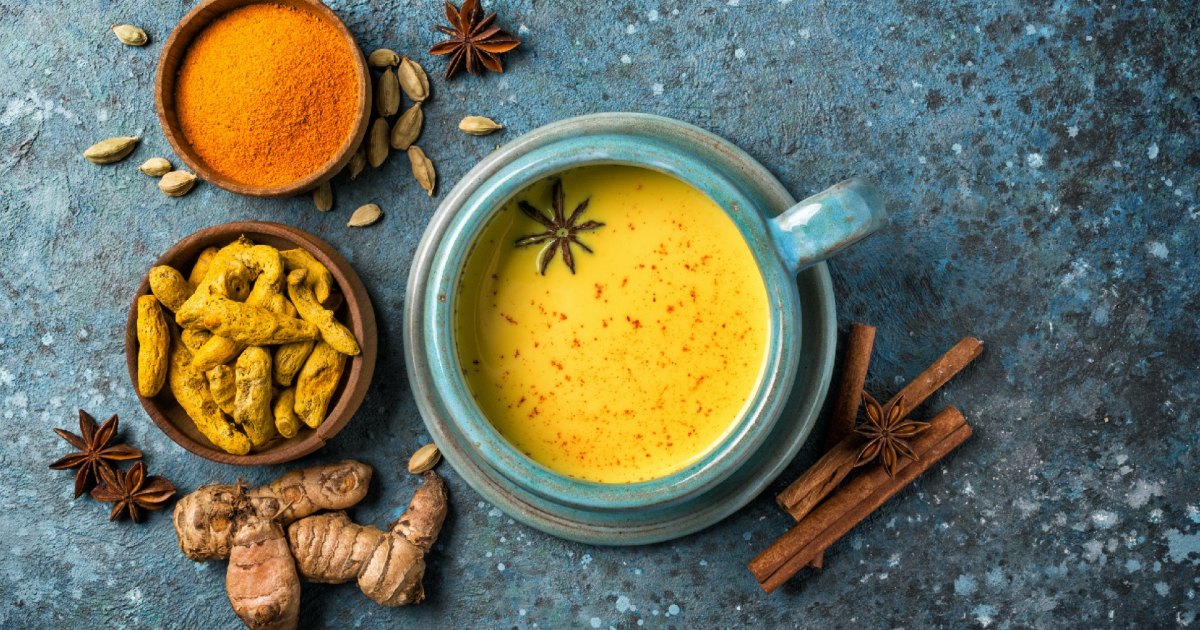No products in the cart.
Fitness Tips
Turmeric Benefits: How to Supplement Your Diet
You’ve probably heard of turmeric by now, the golden spice that’s been promoted for a host of health boons. But what exactly is it? Can turmeric benefits make a difference in your day-to-day life? And what are the best ways to consume it? Here’s everything you need to know.
What Is Turmeric
Turmeric is a spice that’s derived from the curcuma longa root, which is part of the ginger family. In fact, it looks remarkably similar to ginger root. The major difference, however, is turmeric has an intense golden-yellow color. That pigment comes from its active compound, curcumin (more on this below). The spice is used worldwide, but is especially common in Indian cuisine and as a remedy to treat certain health conditions such as arthritis and heart conditions.
Health Benefits of Turmeric
Turmeric contains many plant-based substances that have a number of proposed health benefits. One group of these substances is called curcuminoids, which provides the greatest health-promoting benefits. That includes the powerhouse we mentioned before, curcumin, which is revered for its anti-inflammatory, anti-aging, and antioxidant properties. In fact, it’s arguably the most potent, naturally occurring, anti-inflammatory agent around.
Now post-workout, inflammation increases in your body as a healing measure. But excess inflammation can be disruptive to healthy cellular processes, like metabolic function, and can damage certain cellular structures, like arteries. By prioritizing a spice like turmeric—and nixing bad behaviors like smoking, being sedentary, and consuming foods that are processed or high in saturated fat—you can boost recovery and overall well-being by lowering inflammation.
The downside to curcumin is that it isn’t absorbed very well in the gut when consumed. To get the dosage that’s going to be most beneficial, supplementation is often needed. Luckily there are many methods that can help increase absorption. Two of the most common: Pair turmeric with piperine (or black pepper extract), or combine it with fats. We’ll show you how below.
How to Consume Turmeric for the Greatest Health Benefits
It’s easier to combine fats and turmeric than you’d think. Add the spice with black pepper, avocado oil or coconut oil, and veggies, tofu, and/or chicken to boost its bioavailability. Golden lattes have also become incredibly popular: heat together coconut oil, almond milk, fresh turmeric, honey, and cinnamon. (Make it at home so you know you’re getting high-quality turmeric.) You can even blend turmeric into your post-workout or morning smoothie; just make sure you use almond milk or full-fat dairy as your liquid to get those healthy fats to bind to the turmeric. There’s one caveat: When you add the spice to meals, it might contain as little at 3 percent curcuminoids, the beneficial active compound. In this case, supplementation is your best bet to get the benefits of turmeric and curcumin.
Take 1,500 mg of curcumin with 60 mg of piperine per day. Or, try supplementing with Meriva, a patented form of curcumin; take 400–1,000 mg per day. Extracts like these are the most potent forms and yield the greatest health benefits.
Top 3 Turmeric Supplements to Take:
Jordan Mazur, M.S., R.D., is the coordinator of nutrition and team sports dietitian for the San Francisco 49ers.
For access to exclusive gear videos, celebrity interviews, and more, subscribe on YouTube!

